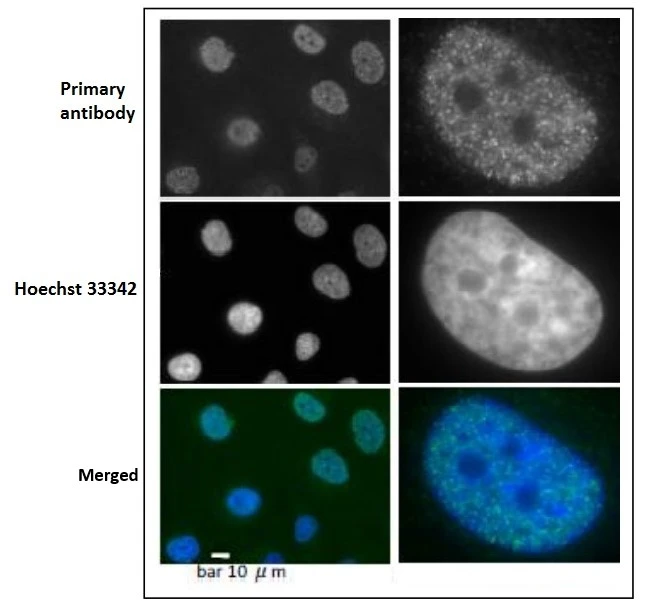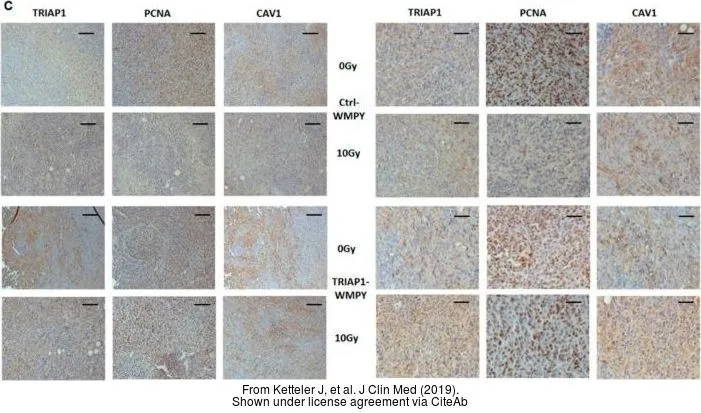
The data was published in the journal J Clin Med in 2019. PMID: 30871022
PCNA antibody [PC10]
GTX20029
ApplicationsFlow Cytometry, ImmunoFluorescence, ImmunoPrecipitation, Western Blot, ImmunoCytoChemistry, ImmunoHistoChemistry, ImmunoHistoChemistry Frozen, ImmunoHistoChemistry Paraffin
Product group Antibodies
TargetPCNA
Overview
- SupplierGeneTex
- Product NamePCNA antibody [PC10]
- Delivery Days Customer9
- Application Supplier NoteFlow Cyt: Use at an assay dependent dilution. IHC-P: 1/1600. Perform heat mediated antigen retrieval before commencing with IHC staining protocol IHC-Fr: Use at an assay dependent dilution. Fix in 4% buffered formalin at room temperature for 2 min then fix in ethanol for 10 minutes. IP: Use at an assay dependent dilution WB: 1:5,000, Detects a band of approximately 30 kDa (predicted molecular weight: 29 kDa). Optimal dilutions/concentrations should be determined by the researcher.
- ApplicationsFlow Cytometry, ImmunoFluorescence, ImmunoPrecipitation, Western Blot, ImmunoCytoChemistry, ImmunoHistoChemistry, ImmunoHistoChemistry Frozen, ImmunoHistoChemistry Paraffin
- CertificationResearch Use Only
- ClonalityMonoclonal
- Clone IDPC10
- Concentration0.5 mg/ml
- ConjugateUnconjugated
- Gene ID5111
- Target namePCNA
- Target descriptionproliferating cell nuclear antigen
- Target synonymsATLD2, proliferating cell nuclear antigen, DNA polymerase delta auxiliary protein, cyclin
- HostMouse
- IsotypeIgG2a
- Protein IDP12004
- Protein NameProliferating cell nuclear antigen
- Scientific DescriptionThe protein encoded by this gene is found in the nucleus and is a cofactor of DNA polymerase delta. The encoded protein acts as a homotrimer and helps increase the processivity of leading strand synthesis during DNA replication. In response to DNA damage, this protein is ubiquitinated and is involved in the RAD6-dependent DNA repair pathway. Two transcript variants encoding the same protein have been found for this gene. Pseudogenes of this gene have been described on chromosome 4 and on the X chromosome. [provided by RefSeq, Jul 2008]
- Storage Instruction-20°C or -80°C,2°C to 8°C
- UNSPSC12352203
References
- Three Human Pol iota Variants with Impaired Polymerase Activity Fail to Rescue H2O2 Sensitivity in POLI-Deficient Cells. Yeom M et al., 2020 Aug 17, Chem Res ToxicolRead more
- Determination of the changes on the small intestine of pregnant mice by histological, enzyme histochemical, and immunohistochemical methods.Read more
- Endothelin increases the proliferation of rat olfactory mucosa cells. Bryche B et al., 2020 Feb, Neural Regen ResRead more
- Progression-Related Loss of Stromal Caveolin 1 Levels Mediates Radiation Resistance in Prostate Carcinoma via the Apoptosis Inhibitor TRIAP1. Ketteler J et al., 2019 Mar 12, J Clin MedRead more
- IL-17c is involved in olfactory mucosa responses to Poly(I:C) mimicking virus presence. Bryche B et al., 2019 Jul, Brain Behav ImmunRead more
- Toward developing recombinant gonadotropin-based hormone therapies for increasing fertility in the flatfish Senegalese sole. Chauvigne F et al., 2017, PLoS OneRead more
- Dual estrogenic regulation of the nuclear progestin receptor and spermatogonial renewal during gilthead seabream (Sparus aurata) spermatogenesis. Chauvigne F et al., 2017 Apr, Comp Biochem Physiol A Mol Integr PhysiolRead more
- High Fructose Diet inducing diabetes rapidly impacts olfactory epithelium and behavior in mice. Rivire S et al., 2016 Sep 23, Sci RepRead more
- Olfactory epithelium changes in germfree mice. Francois A et al., 2016 Apr 19, Sci RepRead more
- Immunohistochemical distribution of heat shock protein 70 and proliferating cell nuclear antigen in mouse placenta at different gestational stages. Ozaydin T et al., 2016 Apr, Microsc Res TechRead more

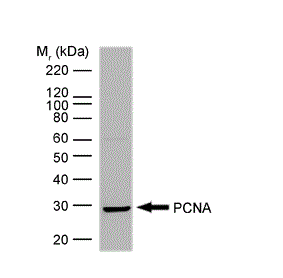
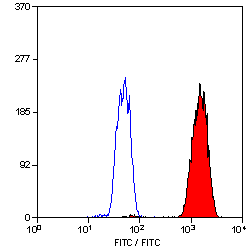
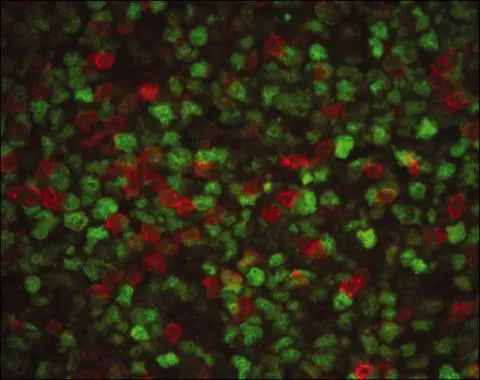
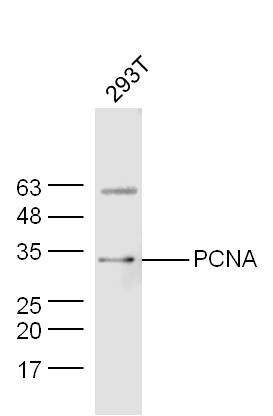

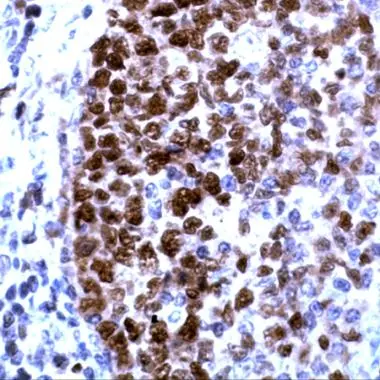
![IHC-P analysis of human tonsil tissue using GTX20912 PCNA antibody [PC10] (ready-to-use).](https://www.genetex.com/upload/website/prouct_img/normal/GTX20912/GTX20912_20191203_IHC-P_67_w_23060620_770.webp)

![ELISA analysis of antigen using GTX60692 PCNA antibody [7H4F8]. Black : Control antigen 100ng Purple : Antigen 10ng Blue : Antigen 50ng Red : Antigen 100ng](https://www.genetex.com/upload/website/prouct_img/normal/GTX60692/GTX60692_20170912_ELISA_w_23061123_743.webp)
